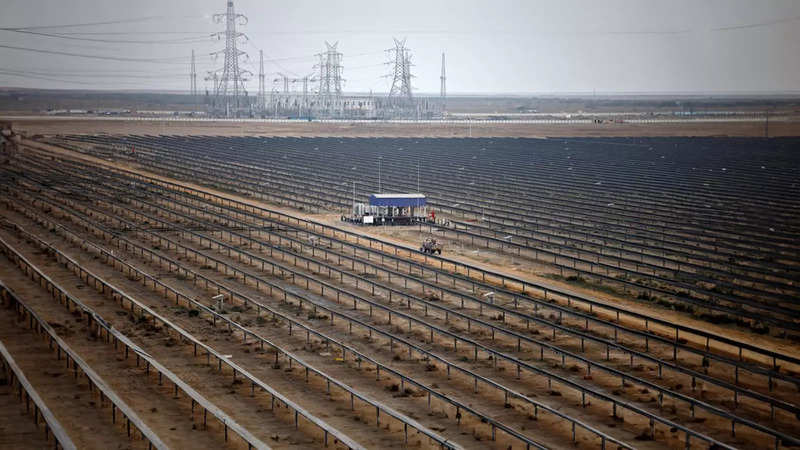The government seems to be creating Indian versions of the highly successful Japanese zaibatsu and Korean chaebol. But mere state support cannot turn companies into successful national champions. Companies need to have skills and capital to build giant conglomerates in this competitive market
Without any announcement or perhaps even a plan, the government seems to be creating an Indian version of the Japanese zaibatsu and Korean chaebol — giant conglomerates supported by the state to create national champions that can take on western corporate giants.
The zaibatsu were corporate families that in 1900-1940 converted a once-backward country into a global power that could fight the UK and US in World War II. The zaibatsu were supported by state subsidies and monopolies. They gave kickbacks, leading to charges of crony capitalism. Dismantled by the US occupying forces after WW-II, they re-appeared in new avatars, and spearheaded Japan’s industrial rise from 1950 to 1990. Korea industrialised rapidly from 1960 onwards. As in Japan, govt backed conglomerates called ‘chaebol’ such as Hyundai, Daewoo, Samsung and Lucky Goldstar. Daewoo went bust but the others became world class.
They too were called crony capitalists. The chaebol, like the zaibatsu, were successful examples of what is now called ‘industrial policy’ — govt support through subsidies and other favours to help create national champions.
India appears to be moving in a similar direction. It now has a corporate Big Three — Tata, Ambani, and Adani — well ahead of the rest. The next tier is headed by Kumar Birla, accompanied by Sajjan Jindal (JSW), Sunil Mittal (Bharti Airtel), and Anil Agarwal (Vedanta). Rahul Gandhi accuses the government of giving them favours for money. He seems to think one can become a top industrialist by buying favours. No, India is an extremely competitive place where the biggest groups of yesteryear have been laid low despite their historic links with top politicians. Where are Hindustan Motors (CK Birla group), Premier Automobiles (Walchand), JK Synthetics (Singhania sub-group), the Thapars or DCM today? Alas, their historical supremacy was not matched by their ability to compete.All industrialists make political contributions, lobby for favours, and get some rewards.
But without enterprise and high efficiency, they wither in the face of competition engendered by globalisation and new upstarts. In the licence-permit raj till 1989, anybody who got an industrial licence could mint money in monopolistic conditions. Today licences have been abolished and competition has killed many big names of yore. Rahul Gandhi accuses Anil Ambani of being a beneficiary of crony capitalism, a charge the latter strongly denies, pointing out that the group bagged big projects when UPA was in office. Yet Anil Ambani, who was once on the global rich list, went virtually bust while his brother Mukesh soared sky high. One was competitive and the other was not. Favours did not matter.
Like Japan’s zaibatsu or Korea’s chaebol, India’s Big Three are conglomerates operating in several fields. In the West, the track record of conglomerates is poor. But in developing countries, good management is a scarce resource. Groups that have it can expand successfully into a huge variety of new sectors. Tata is in IT, steel, autos, power, chemicals and electronics.Adani has diversified from ports into power, cement, airports, solar parks and equipment. Rahul Gandhi says he got favours. But that alone cannot explain his meteoric rise, just as favours alone did not explain the success of Mitsubishi or Hyundai.
To promote manufacturing, BJP government launched a production-linked incentive (PLI) scheme. Its big success has been in attracting Apple for cellphones, with Google Pixel likely to follow. But this may not thrill the RSS: it wants national champions, not MNCs. The problem till recently was that Indian companies were good enough for middling technology but lacked the skills and capital to become world class. That is finally changing.
Government is building on this by helping the top conglomerates to become world-class national champions. In green hydrogen, a cutting-edge area, the govt is backing Reliance Industries and Adani with PLIs to become world leaders. It offers subsidies of up to 70% for chip fabrication (fabs). Tata will launch the first fab in Dholera, Gujarat. Adani plans to be in the entire value chain from solar equipment to solar parks, becoming a world renewables leader. Tata plans to become a world leader in electric vehicles, and Ambani in telecom. Bharti Airtel is already a major telecom operator in Africa.
Defence has been opened to the private sector. Tata is at the forefront of defence aeronautics. A Reliance subsidiary has showcased software for drones and aircraft design. Adani is building a missile plant in Telangana and plans to make drones too.Adani is India’s top port operator. He is instrumental in helping India compete with Chinese port expansion in Asia, by building ports and terminals abroad in Haifa and Colombo.
Space has been opened to private companies including foreign ones. But rather than letting Tesla’s Starlink dominate satellite telephony, both Reliance Jio (Ambani) and Bharti Airtel plan to give it competition and will get all the support they need.
China, Korea and Japan have always been admired for creating national champions. Atmanirbhar (self-reliance) is evolving into chaebolisation. Whether it will succeed is an open question.


